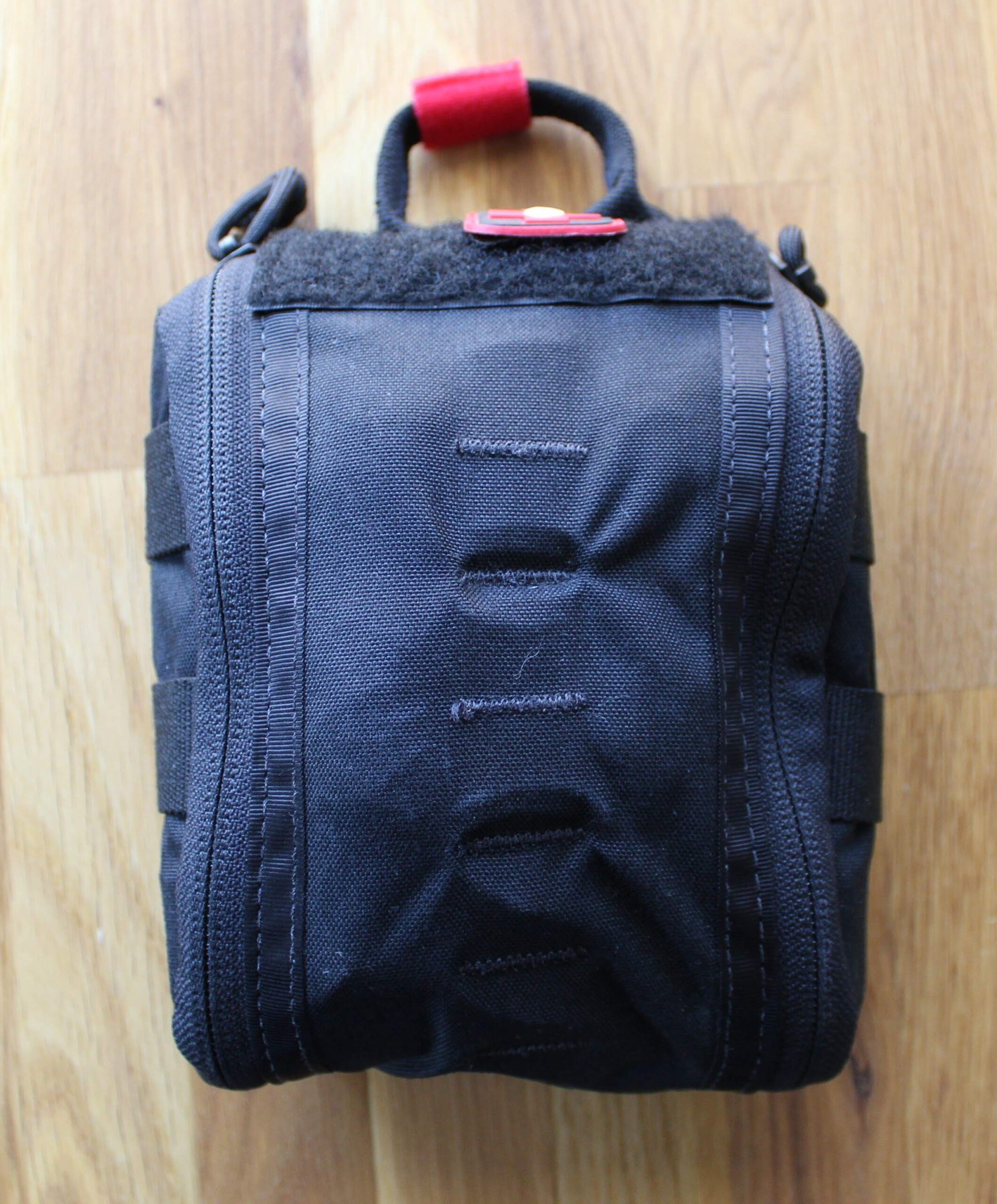
In my last article, we discussed the primary assessment tool “MARCH.” This writing is aimed at carrying the tools necessary for treating life threats. I call it an IFAK (Individual First Aid Kit). Others may call it a trauma kit, blowout kit, or GSW (gunshot wound) kit.
By J. Bridger, contributing author
I think everyone who carries a weapon should have an IFAK and be proficient with it. I was guilty for a long time of having a $500 optic, but no med kit. Remember, your safety is your responsibility, and you may be the only person that can save yourself! You can bleed to death in 3 minutes from a severed femoral artery (and you can lose consciousness long before that). Back home in rural Kansas, the nearest ambulance was 23 miles away.
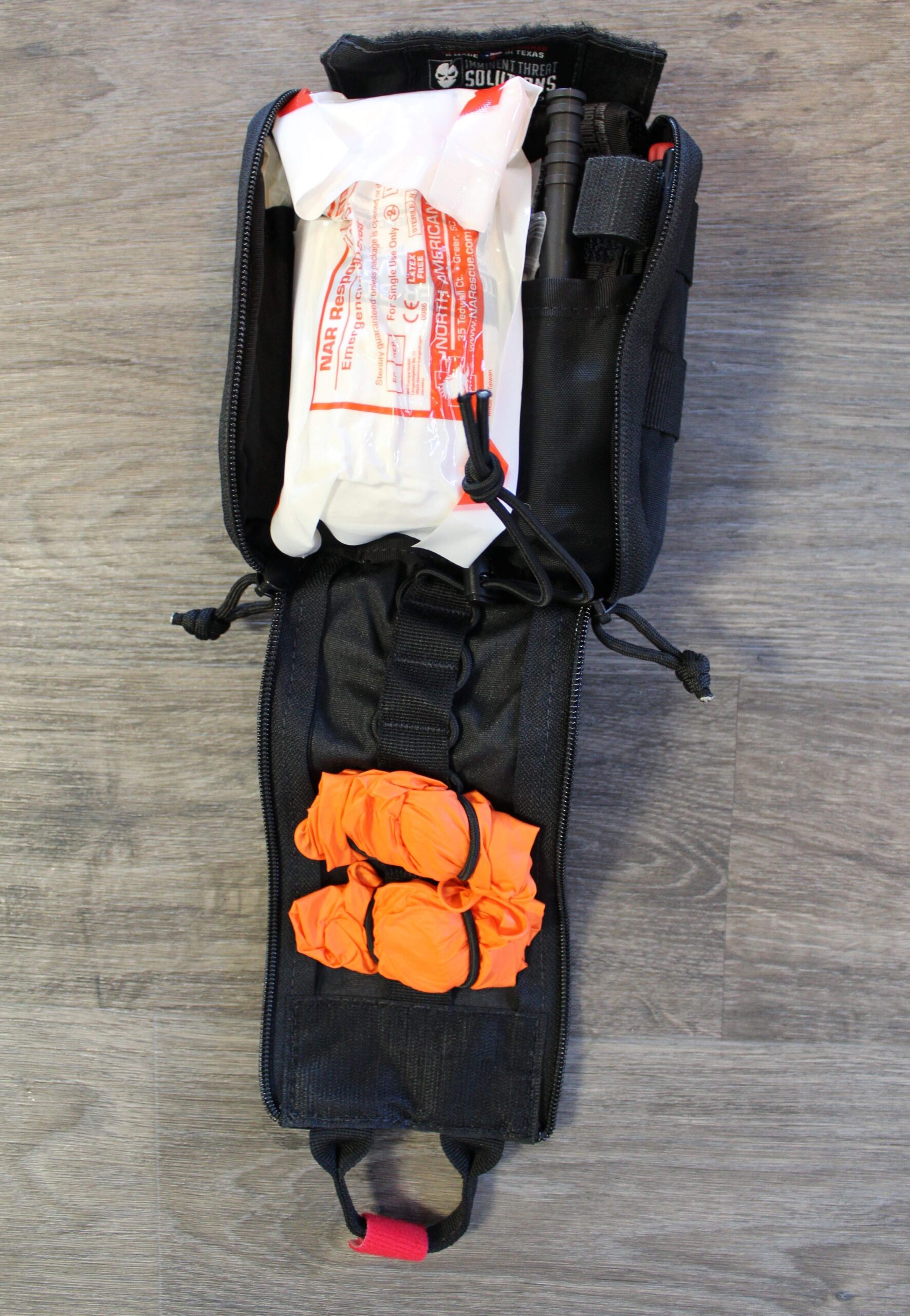
For the pouch, I use an ITS ETA Trauma Kit Pouch. It opens easily by yanking down on the handle. When my adrenaline is pumping and my fine motor skills are affected, I’d rather not fumble with a small zipper. If you wear a plate carrier, you could pack this flat and use a foodsaver to suck the air out, so you can store it behind your front plate. Let’s break this down by category:
M = Massive Hemorrhage
I carry a Combat Application Tourniquet (CAT). They say to leave these in the packaging for protection against the elements, but I take the plastic off mine anyway. If I have to use it, I don’t want to be peeling away the shrink wrap with dumb fingers. I leave it in the pouch, so I reason that is protection enough. There are other options available, such as the SOFTT and SWAT-T. The only recommended tourniquets by the Committee on Tactical Combat Casualty Care are the CAT and the SOFTT. Other TQs may work fine, I just like the CAT.
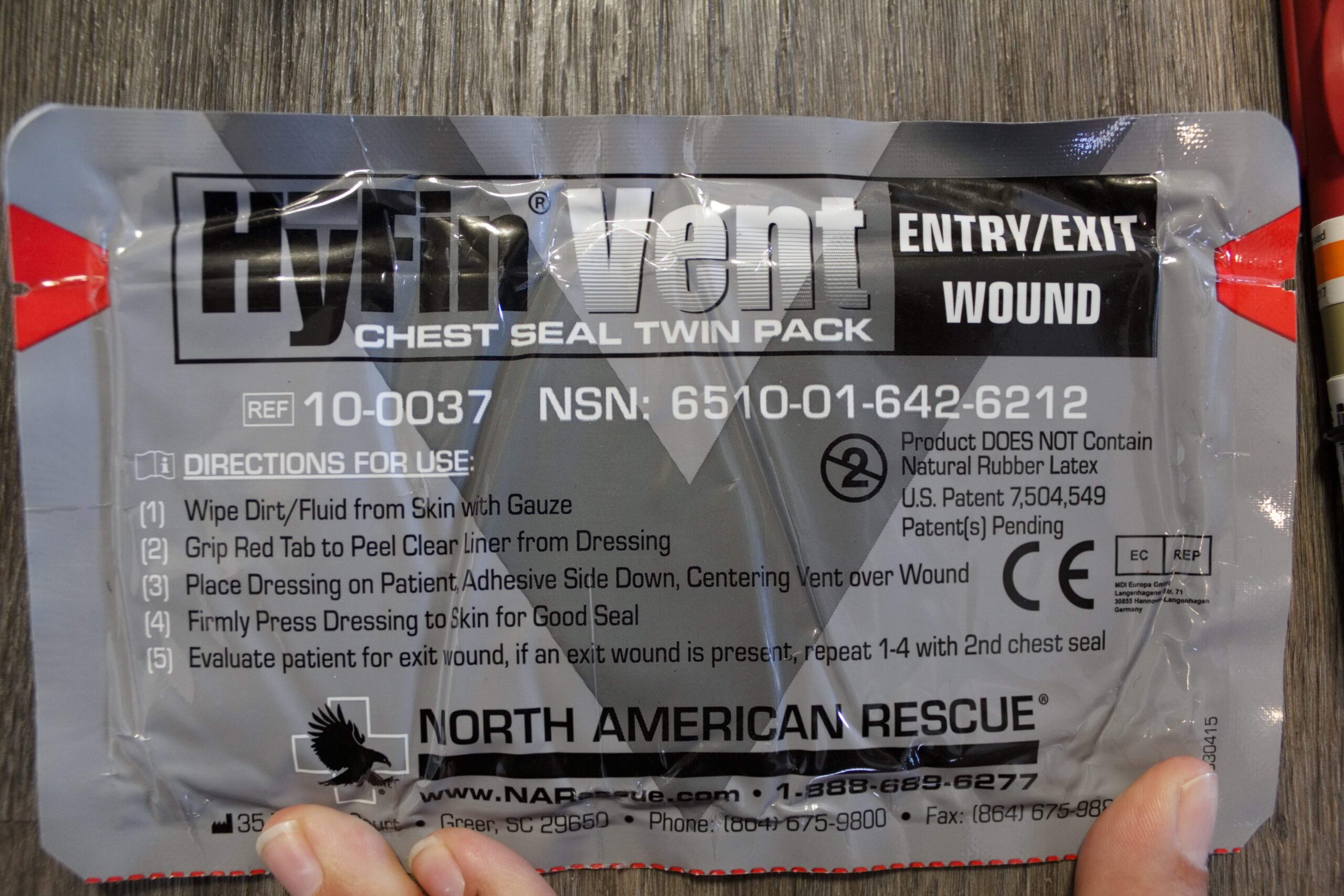
I also carry a 6” Emergency Trauma Dressing (ETD). It’s basically a large absorbent pad that has a tough ACE bandage attached to it. You can crank these suckers down really tight, which is great for controlling bleeding. Even better if you need free hands to shoot or clean your AR while watching Red Dawn. If you have a wound where your neck and shoulder meet, you can place one bandage on the wound, and wrap the other around it and under the opposite armpit. When I had this done to me in our TCCC class, it was wrapped so tight it hurt my collar bone. I recommend buying a couple “sacrificial” ones to practice with. They are durable enough you can use them to practice many times, and they only cost about $8 each.
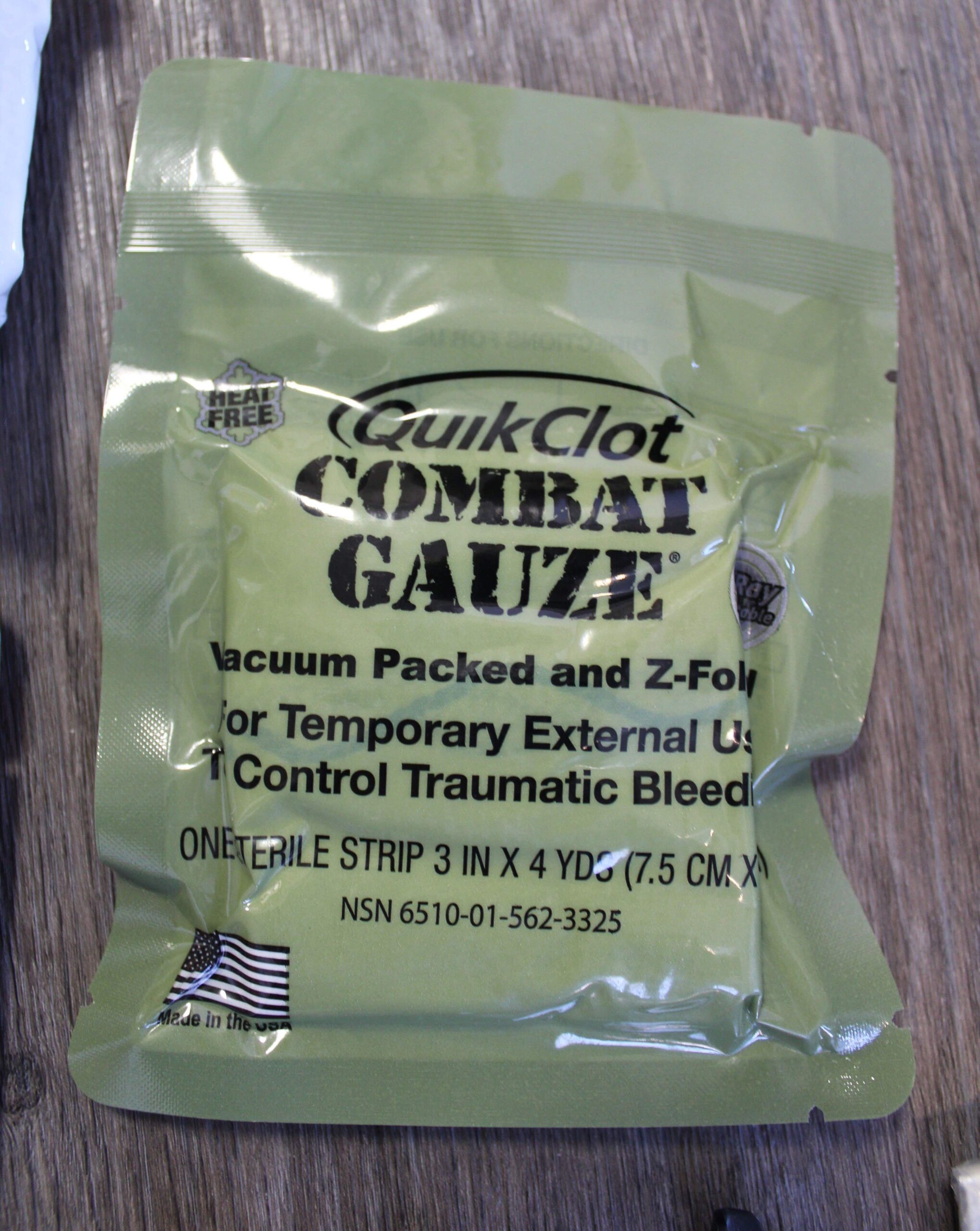
I also carry a hemostatic agent. Hemostatic agents aid in blood coagulation. Applying direct pressure should stop a bleed in ten minutes. Using a hemostatic agent, that time is cut to three minutes. In one of our TCCC scenarios, I was forced to hold direct pressure on a dummy for ten minutes while my teammates treated other “victims.” It felt like a lifetime. I wanted to move on, triage, and help. After that, we purchased a mix of celox and combat gauze for our kits. I’ve heard the next big thing is HemCon Chitogauze, but I don’t have any experience with it yet.
A = Airway
To treat airway issues, I carry a 28 Fr nasopharyngeal airway (NPA). The Fr means “French” which is a measurement system completely lost on me. I chose 28 Fr because it should fit most adults. They come in all sizes. Nasopharyngeal is a fancy word meaning it goes up your nose and resides in your nasopharynx. I like this airway because you can use it on a semiconscious (or conscious!) patient, and it should not invoke a gag reflex. It works well when the tongue is relaxed and obstructing the airway, and you can use a bag-valve-mask or non-rebreather oxygen mask with it. These shouldn’t be used if you suspect head injury. NPAs are pretty cheap, about $5, and should come with a small packet of surgical lube to aid in insertion.
R = Respirations
To treat an open wound of the chest, I would slap on a chest seal (don’t forget to check the back!). This is to prevent an open wound from creating a pneumothorax. I carry a two pack of Hyfin vented chest seals (about $17). I like the vented ones because they let pressure out, but not in. Halo also makes good ones. If you get non-vented seals, you may need to lift up an edge periodically to relieve pressure. If you don’t have purpose made seals, you could use good tape to secure a barrier to the chest over the wound, like a square cut from an MRE or mountain house bag. Taping on 3 sides creates a flap that acts like a one-way valve, letting air out but not in.
I also carry a 3.25” 14-gauge decompression needle for a pneumothorax. Better to have it and not need it than the other way around. This cost about $10 and is about the size of a sharpie. It is possible to have bilateral (both sides) pneumos, and I know for a fact the ambo back home only carries one chest tube kit. Two is one and one is none!
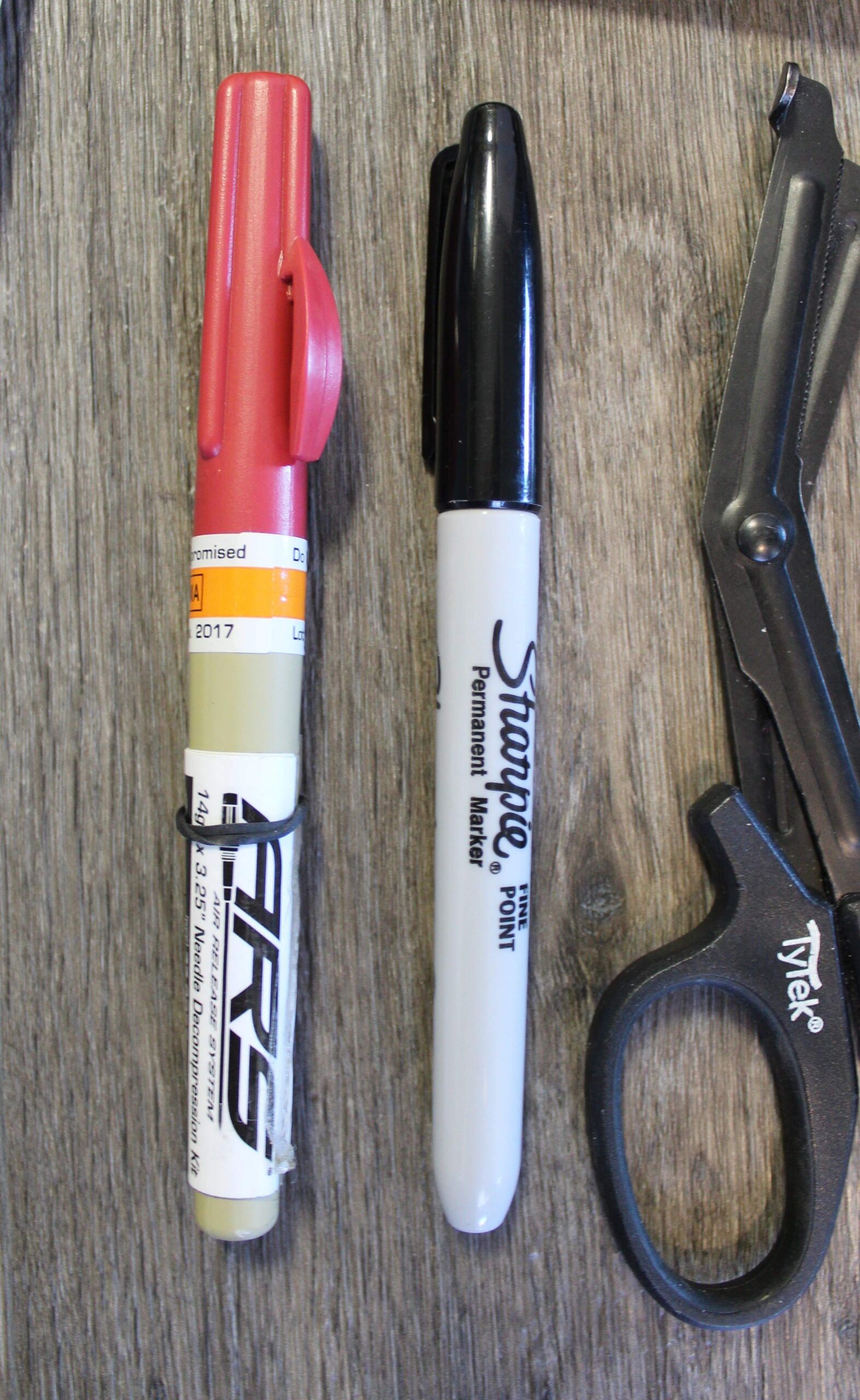
Here’s a fun fact you can use to impress your Tinder dates: You have one chest cavity, but the left side pleura (the membrane covering the lungs) does not “communicate” with the right side pleura. This just means they are separated. If something disrupts the pleural lining air can be drawn in, and your lung may collapse. The opposite (contralateral, if you want to sound cool) side lung remains unaffected. Buffalo do not enjoy this anatomic safeguard. Their left and right chest cavities do communicate, meaning both lungs would be affected instead of just the one on the wounded side. This makes them more susceptible to pneumothoraces and is one of the reasons Native Americans were able to take them down with bows and arrows.
C = Circulation
I don’t carry IV stuff or oxygen. Its bulky, heavy and hard to get. Did you know you need a prescription for oxygen? Basic life support should come before advanced life support anyway! Be able to recognize signs of shock in you or your patient (discussed in the last article). Know where to find a radial pulse and capillary refill. Stop the bleeding, stay warm, raise your legs if needed.
H = Head Injury & Hypothermia
I don’t carry a c-collar, or a heated blanket either. Most days I have a sweater, and I keep a blanket in my truck. Do the best with what you have between your ears and what is available to you! Remember, cold ground can suck the heat out of you.
You can see most of the items are geared toward stopping the bleed and treating breathing problems. That’s because this is what kills people the fastest. I also carry gloves, shears, a few band aids, and some over the counter medicines. I like ibuprofen for muscle aches and swelling. I carry aspirin, because of its antiplatelet properties for chest pain. I like off brand Excedrin for headaches. Lastly, I carry diphenhydramine (Benadryl) for several reasons. Off label, it has anxiolytic (anti-anxiety) and antiemetic (anti-vomiting) properties (think motion sickness). Its also good for allergies, allergic reactions (from poison ivy to more severe reactions), and as a sleep aid.
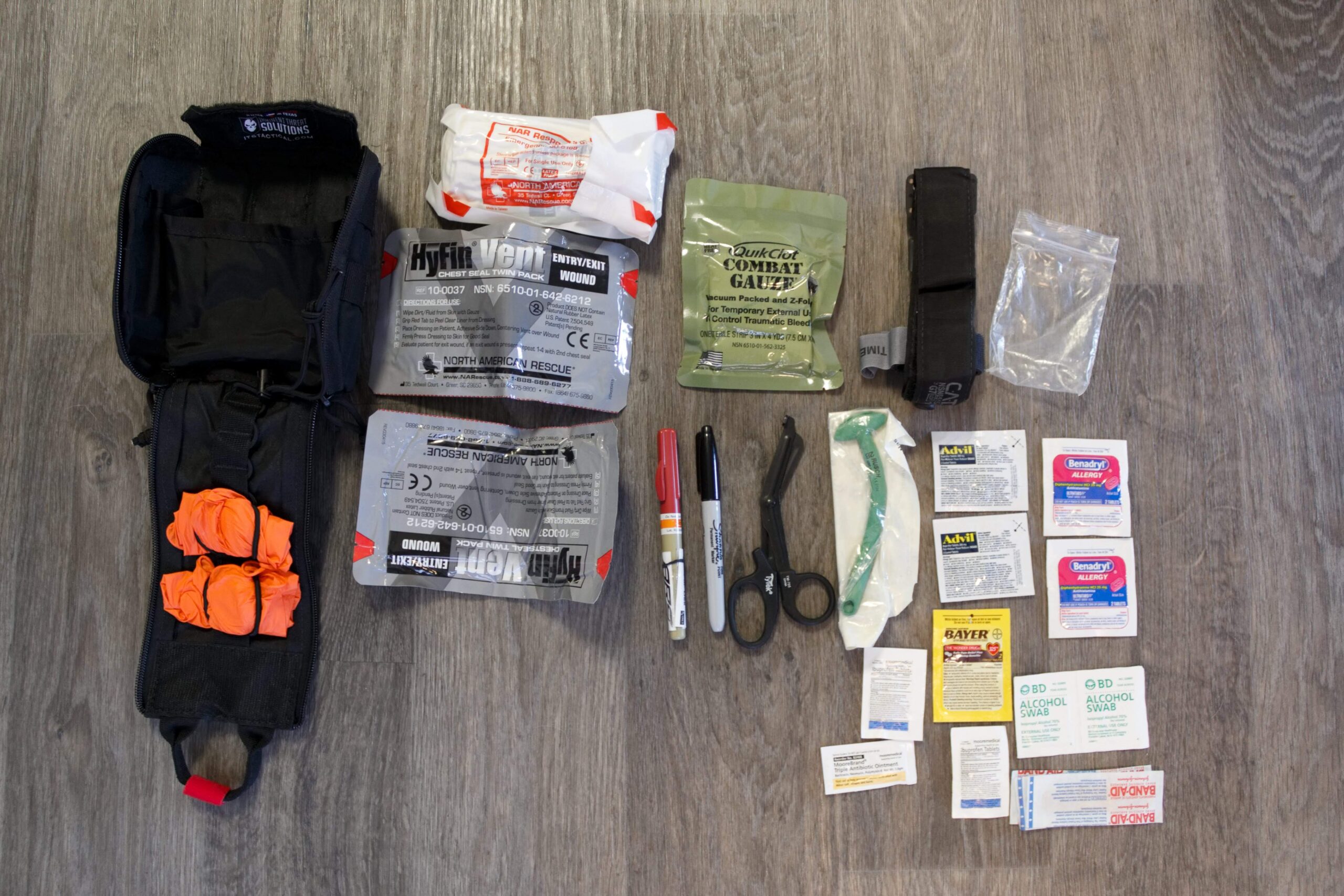
You may consider carrying other items as well, such as a SAM Splint, eye shield, or Water-Jel burn dressings. I try to keep my kit as small and light as possible, so I am more likely to carry it with me.
These kits can be prohibitively expensive. Next, I’ll explore budget options. That way you can get into a good kit, use them to train, or make several and stash them all over.
Related J Bridger article: MARCH – A Lifesaving Primary Assessment
Be safe and train, train, train!

1 comment
check your local area on oxygen. As an EMR or any licensed/certified medical first responder the local oxygen supply store will refill the bottle without prescription as long as they have a copy of your certification. Difference between emergency use vs therapeutic use.